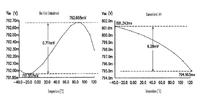crystalballs
Member level 1

bandgap reference ppm
Hi all,
I have to design a bandgap circuit (curvature compensated I guess...) to reach the performance of:
10 ppm/^C.
Usually, I calculate the "ppm/^C" as follows:
PPM = 1000000 * Vbg(T) / Vbg(@25^C) [ppm/^C]
Please, do you have some advices about the bandgap architecture (i.e. the circuit) to use?
Thanks in advance.
CBs.
Hi all,
I have to design a bandgap circuit (curvature compensated I guess...) to reach the performance of:
10 ppm/^C.
Usually, I calculate the "ppm/^C" as follows:
PPM = 1000000 * Vbg(T) / Vbg(@25^C) [ppm/^C]
Please, do you have some advices about the bandgap architecture (i.e. the circuit) to use?
Thanks in advance.
CBs.







